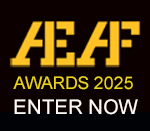Wētā FX’s work on the video-game inspired series The Last of Us, focused on bringing to life zombie-like creatures and developing a variety of post-apocalyptic environments.
Video unavailable for public viewing
TV Series
The Last of Us
Wētā FX
Wētā FX’s work on the video-game inspired series The Last of Us, focused on bringing to life zombie-like creatures and developing a variety of post-apocalyptic environments. Several innovative techniques were used to bring the horrifying reality of the cordyceps infection to life, showing fungal deterioration in a way that complemented the practical effects and prosthetics used on set.
Replacing live action shots of the Clickers enabled artists to enhance the creatures’ overall performance, adding more realism to the cordyceps by adding light transmission and sub surface scattering.
Bringing the iconic Bloater creature to life required extensive experimentation with different tools and techniques, as his humongous body was covered with growing Cordyceps fungus. Ensuring the fatty tissue was the correct level of thickness was paramount to achieving the correct buckling behaviour, which also prevented the look of a rubber suit. This fat layer also needed to sit at just the right depth to allow the skin to slide against it, whilst the rigid Cordyceps and spore pods were able to retain their shape in the simulation during movement. The use of all of these techniques helped to emphasise the creature’s inhumane ability to run, throw and tear with maximum weight and brutality
The epic cul-de-sac battle was the Wētā teams big hero sequence of the show - featuring significant crowd, lighting, and comp work. Artists added a horde of clickers and infected escaping a sink hole to ramp up the chaos of the sequence, which they then enhanced with combustion and destruction simulations.
The giraffe-encounter scene plays a pivotal role in both the game and the series, the environment needed to fit into the overall aesthetic of a decaying world but also serve as an oasis. Stitched drone footage captured at a car park in Salt Lake City was used to assemble a high resolution, panoramic image which served as the basis for the environment. Existing buildings were dressed with weathering, partial destruction and plant overgrowth using projections and procedural techniques. The perimeter of the park was both manually and procedurally dressed with a variety of grasses, shrubs, and trees then simulated with ambient motion to bring it all to life.
CREW
Wētā FX



